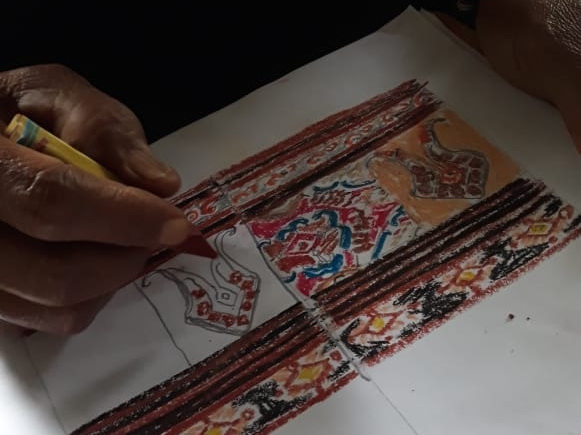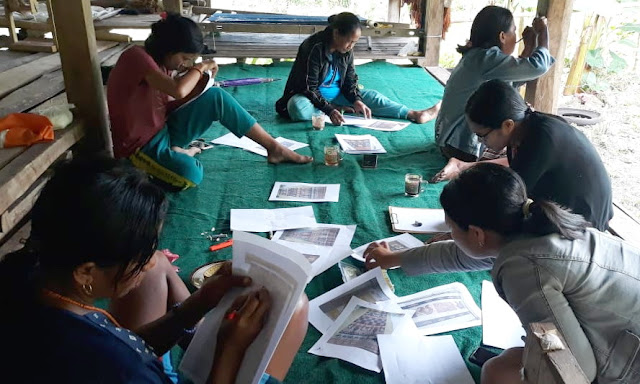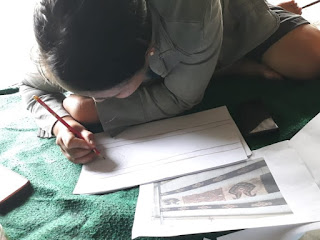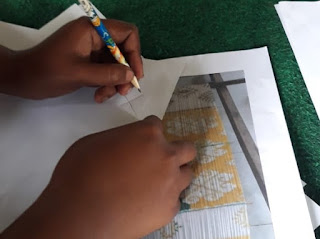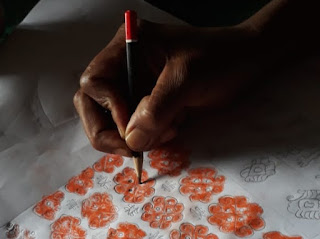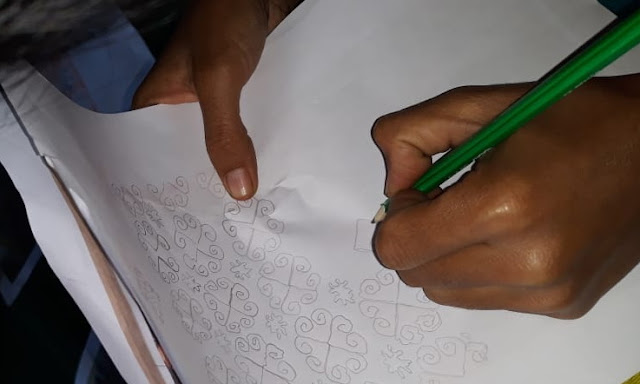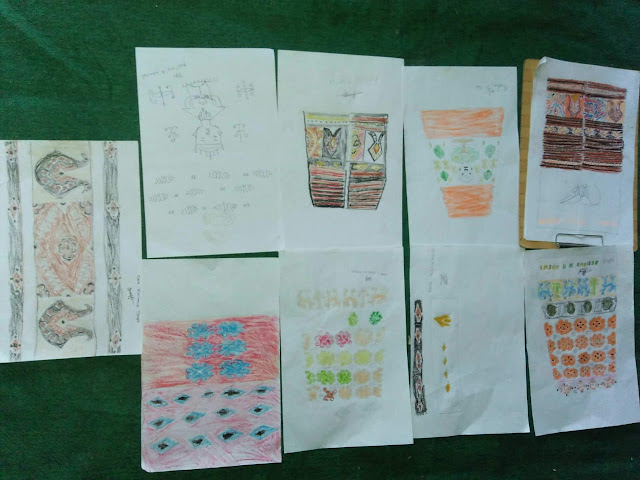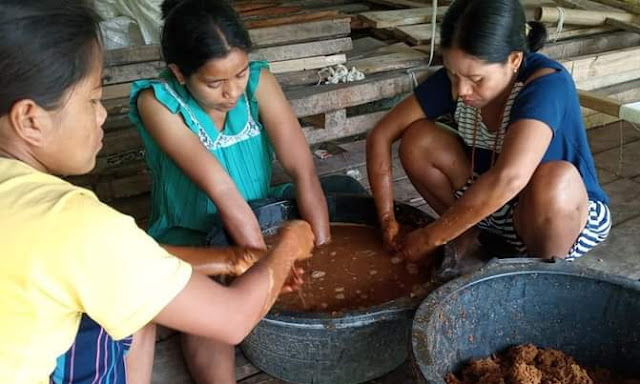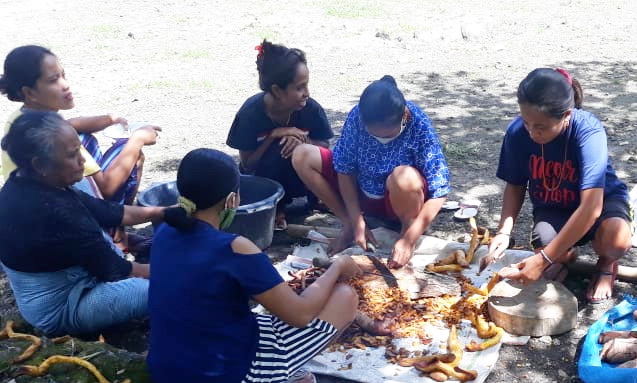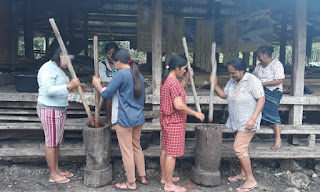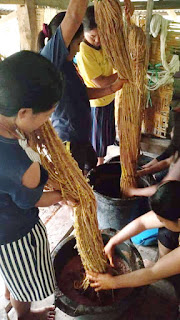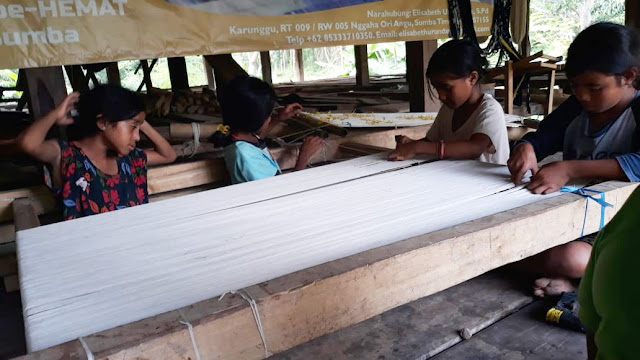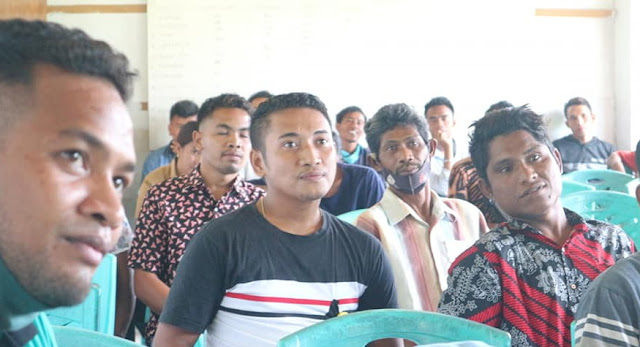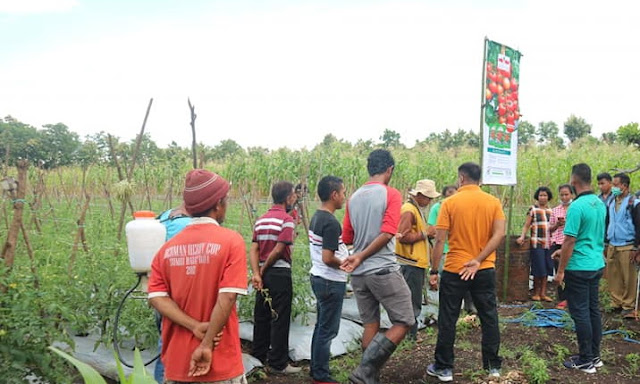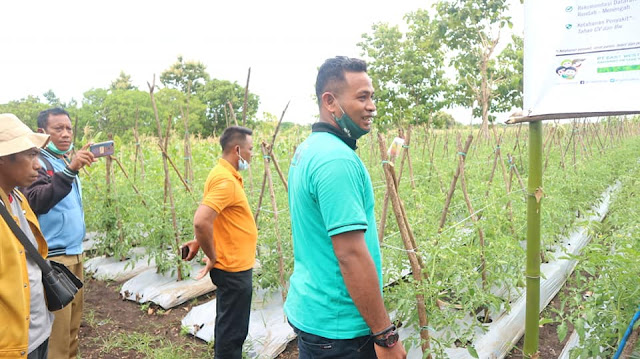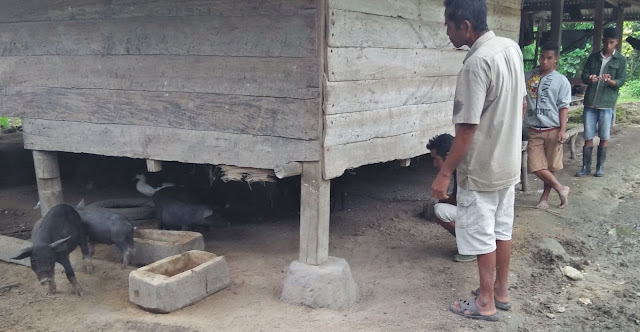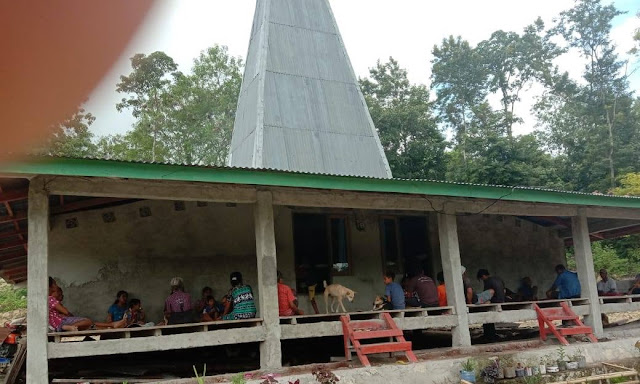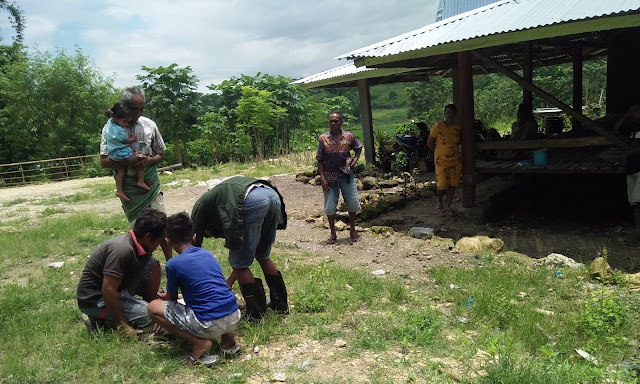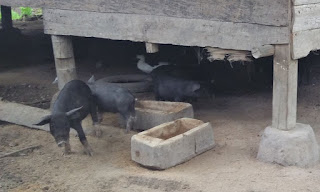Woven cloth is one of the archipelago's heritage which has a unique beauty. In woven cloth, there is a richness of cultural heritage whose motif reflects the life of Indonesian society. The values contained in woven fabrics include customs, culture, and habits that reflect the identity of the Indonesian people, especially in Sumba. The decorative designs contained in a woven cloth usually reflect human relations both vertically and horizontally. The Sumbanese needs to instill their love for their culture, especially the Stube HEMAT weaving group, most of them are beginners. Not only verbally but also be taught to practice weaving directly, and deepen the process of designing motifs because the beauty of woven cloth can be seen from the way of designing.
The beginners need to learn how to design, to understand many things about color combination, line and space arrangement, line and space composition, textures, aesthetic values , and various existing designs as references. On Wednesday, February 24, 2021, the weaving group learned to explore the design of the East Sumba weaving motif globally with Kornelis Ndapakamang, a weaving expert in motif design and natural dye techniques.
He explained that it is not easy to learn motif design and not everyone can design motifs directly on the woven fabric. Only certain people have the talent and enthusiasm to learn it, they can easily design directly on the sheet of cloth they want to weave. The examples of the designs he has made are shown through his mobile phone screen, there are various kinds of motif that are easy to design. The participants seemed encouraged to get new ammunition, strength, and enthusiasm in practicing weaving. Yustina, the weaving trainer, admitted that she felt happy with the new motivation and knowledge she has gained, such as models and ways of designing images on motifs, types of ingredients, and other natural dyes to good coloring methods to get a better result on the colors of the woven fabrics.
In addition to design motifs and colors, Kornelis also shared his experiences in the world of weaving, networking with local and central governments, the visits of foreign guests, and the process of assisting the weaving groups that were built. He was born in descendants of weavers family, so practicing weaving has been done since he was a child. His family has always kept to the principle of weaving and use natural dyes without chemicals. He appreciated and gave full support to the participants of the Stube HEMAT weaving group, of which most of them are beginners.
Kornelis talked about his wife who is not from a weaver's family, but when she got married, she was taught and equipped how to weave. Until now, she has become a weaving trainer for the trainees under her assistance. It gives hope and strength in the future to be able to weave and even teach others. From the spirit of learning about weaving, it will become a memorable history for the participants of the Stube HEMAT weaving group. In the history of weaving, a weaver symbolizes the tenderness and patience of a woman's heart. Through weaving women can also understand the philosophy of life. ***



